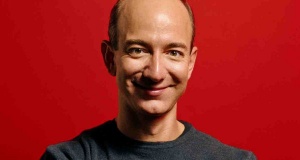Mechanical Turk
From SI410
|
A
mazon Mechanical Turk (MTurk) is the largest e-commerce company worldwide.[2] The company is also known for its product line of Amazon Kindle e-book readers, Amazon Kindle Fire tablets, Amazon Web Services cloud computing services, and Amazon Mechanical Turk online marketplace. Jeff Bezos founded Amazon.com in 1995 in Seattle, Washington.[3] Amazon.com was originally limited to selling books, but it has expanded its inventory to include CDs, DVDs, electronics, apparel, or any other non-perishable good that can be shipped by mail.[3] In addition to selling goods, Amazon's services now include selling and maintaining a digital collection of materials for the Kindle reader, allowing for the purchase and storage of TV shows and movies in the cloud system, and giving Prime customers access to free streaming of many TV shows and movies. Many of their services also raise interesting ethical questions. Examples of criticism from customers include: allegations of a deceptive pricing system, an exploitable ratings system, ebooks limiting user rights, and accusations that their browser is designed in a manner that implicitly threatens user privacy.
History
Jeff Bezos conceptualized Amazon.com in 1994 while working at D.E. Shaw & Co., a global investment management corporation. After weighing the pros and cons through a process he described as "regret minimization," he decided to leave D.E. Shaw in order to pursue his urge to found an online book selling company. Bezos believed e-commerce would become a very profitable business because the Supreme Court had recently decided online sales are not taxable. In addition, he believed online sales would follow a long-tail distribution, allowing Amazon.com to sell and carry books that would not be economical for a physical store to carry. Bezos sold his first book from his garage in 1995.[3]
Within the first month of launching the website, Amazon.com had a searchable database of one million books available and had received orders from all 50 states and 45 different countries. Amazon.com stocked roughly 2,000 of the most popular titles and would order the titles they did not stock from wholesalers and publishers. Jeff Bezos eventually moved Amazon.com's fulfillment center from his garage to an office location in Seattle once it was evident Amazon.com was becoming a highly successful operation. Between 1995 and 1997, Bezos added an additional half million titles, implemented an approach of discounting nearly all products by 10-30%, and created a review, recommendation, and notification system. In 1997, Amazon.com held its initial public offering of three million shares to raise capital for expansion. In order to minimize distribution time, Amazon.com opened a new distribution center in New Castle, Delaware. The new location minimized delivery times for both customers and amazon's internal orders from eastern publishing companies. Amazon.com also opened an "Associate" program, allowing other websites who hosted advertisements for books on Amazon.com to receive a commission of 8-15% if a consumer purchased the book after clicking on the ad. In October 1997, Amazon.com was the first website to announce reaching its one millionth customer. In March of 1998, Amazon.com had 2.6 million customers in its database, an increase of 1.6 million customers in just five months. Amazon.com continued to expand, entering the music business and purchasing IMDB in 1998. Between 1999 and 2001, Amazon.com's sales continued to climb; however, it continued to post net losses due to Bezos' focus on market share above profit. Many were skeptical of whether Amazon.com would turn a profit after losing over $1 billion over the course of seven years. In 2001, Amazon.com reported its first net profit, and in the second quarter of 2002, it reported its second net profit.[4]- ↑ Pinterest on Wikipedia
- ↑ Internet Retailers: The Top 500 Guide http://www.internetretailer.com/top500/list/
- ↑ 3.0 3.1 3.2 http://books.google.com/books?id=Nz43wixr2IcC&pg=PA47#v=onepage&q&f=false
- ↑ FundingUniverse: History of Amazon, Inc.


